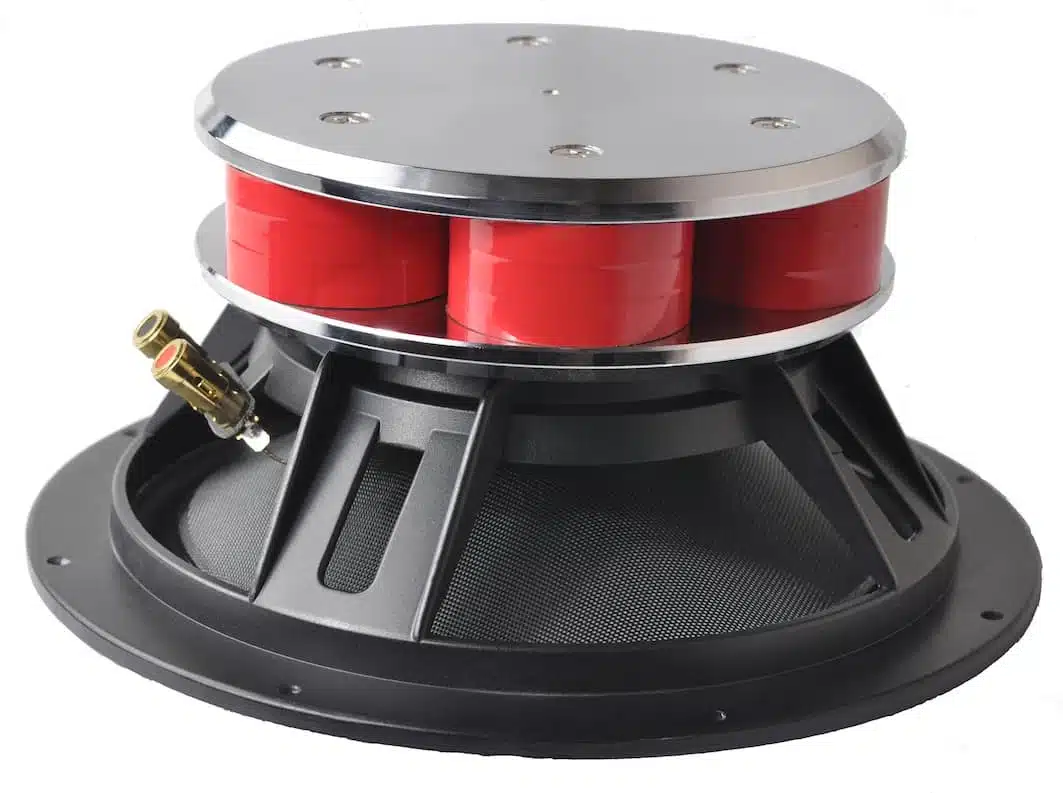Magnets are often used by speakers to create sound. When a magnet is placed near a speaker, it creates a magnetic field. This magnetic field causes the speaker to vibrate, which in turn produces sound.
The strength of the magnet can affect the volume of the sound that is produced.
Speakers use magnets to create sound. When electricity flows through a wire, it creates a magnetic field. This magnetic field interacts with the permanent magnet in the speaker to make the speaker cone move.
The movement of the speaker cone produces sound waves.

Credit: boomspeaker.com
How Do Speakers Use Magnets
The magnets in speakers are used to create sound. When an electric current is passed through a coil of wire wrapped around a magnet, it creates a magnetic field. This field interacts with the magnetic field of the permanent magnet in the speaker, causing the coil to move back and forth.
This movement causes the cone of the speaker to vibrate, producing sound waves.
How Do Magnets Produce Sound
How Do Magnets Produce Sound?
We’ve all seen how magnets can produce sound. But have you ever wondered how they actually do it?
It turns out that it’s a pretty simple process.
Magnets produce sound by vibrating a metal object. When the magnet is turned on, it creates a magnetic field.
This field interacts with the metal object, causing it to vibrate. The vibrations create waves in the air that we hear as sound.
Magnets can produce a wide range of sounds, from low tones to high-pitched beeps.
They can even be used to create music! Some musical instruments, like electric guitars and keyboards, use magnets to convert string or key vibrations into electrical signals that are amplified and sent to speakers.
So next time you hear a magnet making noise, remember: it’s just vibrating metal!
Do Speakers Have Magnets
Yes, speakers have magnets. Magnets are used in speakers to create a magnetic field that helps move the speaker cone back and forth, which produces sound. The stronger the magnet, the more powerful the sound.
Do Speakers Use Magnets to Convert Sound into Electricity
Speakers use magnets to convert sound into electricity. By vibrating a permanent magnet in response to an alternating current, they create a varying magnetic field. This varying magnetic field induces an electric current in the speaker’s coil of wire, which then moves the speaker’s cone and produces sound.
How Do Speakers Work
When you think about how a speaker works, you might imagine someone standing on a stage in front of a microphone, talking into it. But what’s actually happening is much more complicated than that. Here’s a look at how speakers work, both the ones in your home and the ones in your car.
Speakers are essentially transducers, which means they convert one form of energy into another. In this case, they take electrical energy and turn it into sound waves.
It all starts with an amplifier, which takes the electrical signal from your stereo or other audio source and amplifies it.
The amplified signal is then sent to the speaker, where it passes through a small coil of wire called the voice coil. The voice coil is wrapped around a permanent magnet, which sits inside the speaker cone.
As the amplified signal passes through the voice coil, it creates a magnetic field.
This interacts with the magnetic field of the permanent magnet, causing the voice coil—and hence the cone—to vibrate. The vibration of the cone produces sound waves, which are what you hear coming out of the speaker.
Conclusion
In a recent blog post, speaker manufacturer Magnepan explains how their speakers use magnets to produce sound. Magnepan uses a process called “planar magnetic” in which they essentially sandwich a thin membrane between two layers of magnets. This design allows the company to create very thin speakers that are still very powerful.
The magnets used in Magnepan’s speakers are also very strong, which allows the company to create very efficient speakers that don’t require a lot of power to produce good sound.
